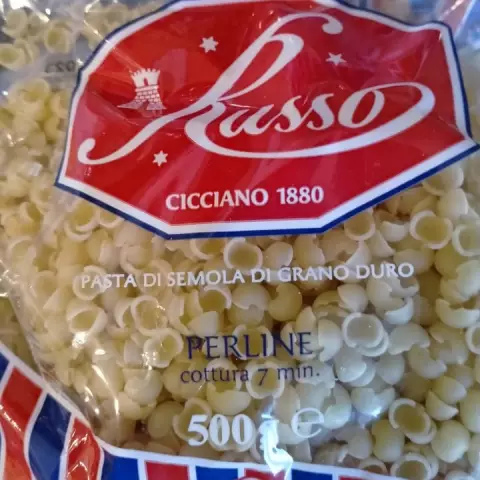- Author Rachel Wainwright [email protected].
- Public 2023-12-15 07:39.
- Last modified 2025-11-02 20:14.
Obzidan
Obzidan: instructions for use and reviews
- 1. Release form and composition
- 2. Pharmacodynamics and pharmacokinetics
- 3. Indications for use
- 4. Contraindications
- 5. Method of application and dosage
- 6. Side effects
- 7. Overdose
- 8. Special instructions
- 9. Pregnancy and lactation
- 10. Drug interactions
- 11. Analogs
- 12. Terms and conditions of storage
- 13. Terms of dispensing from pharmacies
- 14. Reviews e
- 15. Price in pharmacies
Latin name: Obsidan
ATX code: C07AA05
Active ingredient: Propranolol (Propranolol)
Manufacturer: ACTAVIS GROUP (Iceland)
Description and photo update: 2019-05-08

Obzidan is a beta 1 and beta 2 blocker, a drug that has antihypertensive, antianginal and antiarrhythmic effects.
Release form and composition
Dosage form - tablets: white, round, with beveled edges, on one side there is a risk separating the embossed numbers "4" and "0", on the other side - a smooth surface (20 pcs. In blisters, 3 blisters each in a cardboard box).
Active ingredient: propranolol hydrochloride, its content in 1 tablet is 40 mg.
Auxiliary components: potato starch, magnesium stearate, gelatin, colloidal silicon dioxide, sodium carboxymethyl starch (type A), talc, lactose monohydrate.
Pharmacodynamics and pharmacokinetics
Due to the non-selective blocking of beta-adrenergic receptors (by 75% beta1- and 25% beta2-adrenergic receptors) propranolol decreases the formation of cAMP from ATP, which is stimulated by catecholamines. As a result, the flow of calcium into the cells decreases. Also, the active substance of Obzidan has a negative batmo-, chrono-, dromo- and inotropic effect, which consists in a decrease in myocardial contractility, inhibition of excitability and conduction, and a decrease in heart rate.
At the beginning of treatment, the total peripheral vascular resistance increases on the first day (due to a reciprocal increase in the activity of alpha-adrenergic receptors and cessation of stimulation of beta2-adrenergic receptors of the vessels of the skeletal muscles), however, after 1-3 days it returns to its initial value, and decreases in the case of prolonged therapy.
The reason for the hypotensive effect of the drug is its effect on the nervous system, a decrease in the cardiac output, the sensitivity of the aortic arch baroreceptors to it (their activity does not increase in response to a decrease in blood pressure), suppression of the activity of the renin-angiotensin system (perceptible in patients with initial renin hypersecretion), sympathetic stimulation of peripheral vessels.
The antianginal effect is caused by a decrease in myocardial oxygen demand due to a negative inotropic and chronotropic effect. Decrease in heart rate leads to lengthening of diastole and improvement of myocardial perfusion. Propranolol may increase oxygen demand, especially in patients with chronic heart failure, due to increased stretching of muscle fibers in the ventricles and an increase in end-diastolic pressure in the left ventricle.
The antiarrhythmic effect of Obzidan is explained by inhibition of atrioventricular conduction, a decrease in the rate of spontaneous excitation of ectopic and sinus pacemakers, and the elimination of arrhythmogenic factors (arterial hypertension, tachycardia, increased cAMP levels, excessive activity of the sympathetic nervous system). Suppression of impulse conduction was detected mostly in the antegrade and to a lesser extent in the retrograde directions, passing through the atrioventricular node and along additional pathways. According to the classification of antiarrhythmic drugs, Obsidan belongs to group II drugs. With regular intake, there is a lesser severity of symptoms of myocardial ischemia due to a decrease in myocardial oxygen demand. The risk of post-infarction death is also reduced due to antiarrhythmic action.
Obzidan is a means of preventing the development of vascular headaches, which is explained by the lesser severity of the expansion of cerebral arteries due to beta-blockade of vascular receptors, a decrease in renin secretion and platelet adhesion, stimulation of tissue oxygenation, inhibition of lipolysis and platelet aggregation caused by the action of catechol factors coagulation of blood during the release of adrenaline.
Propranolol is able to increase the tone of the bronchi and atherogenic blood properties, reduce tremor due to blockade of beta2-adrenergic receptors, enhance uterine contractions (spontaneous and caused by drugs that stimulate the myometrium).
Propranolol is rapidly and almost completely (90%) absorbed when taken orally and excreted from the body in the shortest possible time. Bioavailability after oral administration is 30-40% (with microsomal oxidation, the effect of "first pass" through the liver), and with prolonged therapy increases (metabolites are formed that are inhibitors of hepatic enzymes). The amount of bioavailability is determined by the intensity of hepatic blood flow and the nature of the food.
Propranolol is metabolized by glucuronidation in the liver. After administration, the maximum plasma level is reached after 1-1.5 hours. This substance is characterized by high lipophilicity and the ability to accumulate in the heart, lung tissue, kidneys, and brain.
Propranolol passes through the placental and blood-brain barriers, enters breast milk. It binds to blood plasma proteins by 90-95%. The volume of distribution is 3-5 l / kg. The active component of Obzidan penetrates with bile into the intestines, where it undergoes deglucuronization and reabsorption.
The half-life is 3-5 hours, against the background of the administration of the drug by the course, it is possible to lengthen this time interval to 12 hours. Propranolol is excreted by 90% through the kidneys, and in unchanged form - no more than 1%. Hemodialysis is ineffective in removing it from the body.
Indications for use
- Atrial tachyarrhythmia;
- Supraventricular tachycardia;
- Exertional angina;
- Essential tremor;
- Arterial hypertension;
- Supraventricular and ventricular premature beats;
- Sinus tachycardia (including with hyperthyroidism);
- Unstable angina (with the exception of Prinzmetal's angina);
- Sympathoadrenal crises against the background of diencephalic syndrome;
- Thyrotoxicosis and thyrotoxic crisis (Obzidan is used as a symptomatic drug in case of intolerance to thyrostatic drugs);
- Prevention of migraine attacks;
- Prevention of myocardial infarction (systolic blood pressure above 100 mm Hg).
Contraindications
Absolute:
- Chronic obstructive pulmonary disease (including history);
- Tendency to bronchospastic reactions;
- Bronchial asthma;
- Vasomotor rhinitis;
- Diabetes;
- Spastic colitis;
- Pheochromocytoma (without the simultaneous administration of alpha-blockers);
- Metabolic acidosis (including diabetic ketoacidosis);
- Occlusive peripheral vascular disease (complicated by pain at rest or intermittent claudication, gangrene);
- Cardiomegaly, if it is not accompanied by signs of heart failure;
- Pulmonary edema;
- Sick sinus syndrome;
- Acute heart failure
- Uncontrolled chronic heart failure stage IIB-III;
- Sinus bradycardia;
- Prinzmetal's angina;
- Acute myocardial infarction (systolic blood pressure less than 100 mm Hg);
- Sinoatrial blockade;
- Atrioventricular block II and III degree;
- Arterial hypotension (systolic blood pressure below 90 mm Hg);
- Cardiogenic shock;
- Concomitant use of antipsychotics, anxiolytics or monoamine oxidase inhibitors;
- Lactation;
- Hypersensitivity to drug components.
Relative:
- Age under 18;
- Elderly age;
- Pregnancy period;
- History of allergic reactions;
- Raynaud's syndrome;
- 1st degree atrioventricular block;
- Chronic heart failure stage I-IIA;
- Psoriasis;
- Myasthenia gravis;
- Renal and / or hepatic impairment;
- Pheochromocytoma;
- Hyperthyroidism.
Instructions for use of Obzidan: method and dosage
Obzidan should be taken orally, before meals: swallow the tablets whole and drink plenty of liquid.
Recommended dosage regimens:
- Hyperthyroidism (symptomatic treatment): 40 mg 3-4 times a day;
- Arterial hypertension: 40 mg 2 times a day. In case of insufficiency of the hypotensive effect, the daily dose is increased to 120 mg (40 mg 3 times a day) or to 160 mg (80 mg 2 times a day). The highest permissible daily dose is 320 mg;
- Cardiac arrhythmias, angina: at the beginning of treatment - 20 mg 3 times a day (daily dose - 60 mg), then the daily dose is gradually increased to 80-120 mg in 2-3 doses. The highest daily dose should not exceed 240 mg;
- Treatment of essential tremor and prevention of migraine: 40 mg 3 times a day, if necessary, further adjust the dose;
- Prevention of repeated myocardial infarction: treatment begins between 5 and 21 days after the attack, the first 2-3 days are prescribed 40 mg 3 times a day (daily dose - 120 mg), then - 80 mg 2 times a day (daily dose - 160 mg). If necessary, the daily dose is increased to 180-240 mg in 2-3 doses.
In patients with impaired renal function, the interval between doses is increased or the dose is reduced.
In case of liver dysfunction, the dose of the drug is reduced.
Side effects
- From the respiratory system: shortness of breath, laryngospasm, bronchospasm, nasal congestion, rhinitis;
- From the side of the cardiovascular system: arrhythmias, chest pain, cold extremities, palpitations, decreased blood pressure, atrioventricular block, sinus bradycardia, orthostatic hypotension, peripheral arterial spasm, myocardial conduction disorder, heart failure;
- From the side of the central and peripheral nervous system: rarely - asthenic syndrome, agitation, headache, decreased ability for rapid mental and motor reactions, drowsiness, nightmares, increased fatigue, hallucinations, dizziness, paresthesias, insomnia, short-term memory loss or confusion, weakness, tremors, depression;
- From the reproductive system: decreased potency;
- From the digestive system: pain in the epigastric region, change in taste, dry mouth, nausea, constipation / diarrhea, vomiting, liver dysfunction;
- From the endocrine system: decreased thyroid function;
- From the senses: impaired visual acuity, dryness of the mucous membrane of the eyes (due to a decrease in the secretion of lacrimal fluid), keratoconjunctivitis;
- Allergic and dermatological reactions: skin rash, itching, increased sweating, exacerbation of the course of psoriasis, exanthema, alopecia, psoriasis-like skin reactions, skin hyperemia;
- From the side of metabolism: in patients with type 1 diabetes mellitus - hypoglycemia, in patients with type 2 diabetes mellitus - hyperglycemia;
- Others: Withdrawal syndrome, chest, back or joint pain, muscle weakness;
- On the part of laboratory parameters: an increase in the activity of hepatic transaminases and the level of bilirubin, a decrease in the number of leukocytes, granulocytes or platelets in the blood.
Overdose
Obsidan overdose symptoms are:
- arterial hypotension;
- bradycardia;
- arrhythmias;
- heart failure;
- loss of consciousness or dizziness;
- convulsions;
- cyanosis of the palms or nail plates;
- labored breathing.
The standard procedures in this case are gastric lavage and intake of activated charcoal. Depending on the accompanying symptoms of overdose, the following treatment is recommended:
- bronchospasm: inhalation or parenteral administration of beta-adrenostimulants;
- violation of AV-conduction: intravenous administration of 1-2 mg of epinephrine or atropine; with low efficiency, a temporary pacemaker should be installed;
- convulsions: intravenous diazepam;
- ventricular premature beats: administration of lidocaine (class IA drugs are not used);
- arterial hypotension: the patient is moved to the supine position, lowering the head end of the bed, and plasma-substituting solutions are injected intravenously (in the absence of symptoms of pulmonary edema); with insufficient effectiveness, dobutamine, dopamine, epinephrine are used.
special instructions
During treatment, it is necessary to regularly monitor the heart rate and blood pressure (at the beginning of taking the drug - daily, then - once every 3-4 months), as well as an electrocardiogram. The elderly also require monitoring of the state of kidney function (every 4-5 months).
If an elderly patient has renal and / or liver dysfunction, worsening bradycardia (less than 50 beats per minute), arterial hypotension (systolic blood pressure less than 100 mm Hg), atrioventricular block, ventricular arrhythmias, bronchospasm, the dose should be reduced Offected or canceled altogether.
The physician should teach each patient how to calculate the heart rate and notify the need to seek advice if this figure is less than 50 beats per minute.
It is recommended to discontinue treatment if depression develops due to the ongoing therapy.
Propranolol can reduce tear production, which should be considered for people who wear contact lenses.
Patients with heart failure (in the early stages) can be prescribed Obzidan only after a course of therapy with diuretics and / or cardiac glycosides.
Treatment of persistent arterial hypertension and coronary heart disease should be long-term, up to several years.
Cancellation of the drug should be done gradually, reducing the dose under the supervision of a physician, since in the case of abrupt cessation of treatment, a deterioration in exercise tolerance, increased myocardial ischemia and pain syndrome with angina pectoris may occur. The optimal withdrawal period for Obzidan is at least 2 weeks with a dose reduction of 25% every 3-4 days.
Patients with diabetes should undergo treatment under the control of blood glucose (every 4-5 months). Particular care should be taken in people who are receiving hypoglycemic drugs, since there is a risk of hypoglycemia during long breaks in food intake. At the same time, its pronounced signs, such as tremor and tachycardia, will be masked by the action of propranolol. The physician should inform patients that the main symptom of hypoglycemia during the period of use of this drug is increased sweating.
In combination with insulin, Obzidan can lead to hypoglycemia, with oral hypoglycemic drugs - to hyperglycemia.
With thyrotoxicosis, propranolol can mask the main symptoms of the disease (for example, tachycardia). In case of abrupt withdrawal of the drug, symptoms may increase.
With pheochromocytoma, Obzidan can only be prescribed in combination with alpha-blockers.
For patients who simultaneously receive clonidine with propranolol, its cancellation can be carried out only a few days after the cancellation of Obzidan.
Patients receiving Obzidan in combination with drugs that reduce the supply of catecholamines (for example, reserpine) should be under constant medical supervision during treatment, since the effect of propranolol may increase, which is manifested by bradycardia and arterial hypotension.
If it is necessary to carry out surgery under general anesthesia using ether or chloroform, you should stop taking Obzidan in a few days, because the risk of developing arterial hypotension and suppression of myocardial function increases.
It is also necessary to discontinue the drug before conducting studies on the content of vinylamidal acid, catecholamines and normetanephrine in urine and blood, as well as antinuclear antibody titers.
The effectiveness of propranolol is reduced in patients who abuse smoking.
During the period of therapy, one should refrain from drinking natural licorice and alcohol, as well as from driving a car and performing any types of work that require increased attention and high speed of psychophysical reactions.
It must be borne in mind that protein-rich foods can increase the bioavailability of propranolol.
Pregnancy and lactation
According to the instructions, Obzidan during pregnancy can be used only when the potential benefit from its use in the mother significantly outweighs the likely risk to the fetus. If it is necessary to take the drug during this period, it is necessary to carefully monitor the condition of the fetus, since the drug can cause bradycardia, hypoglycemia and intrauterine growth retardation in the fetus. Obzidan is canceled 48-74 hours before the onset of labor.
During lactation, taking the drug is strictly prohibited. If necessary, breastfeeding is discontinued.
Drug interactions
- Monoamine oxidase inhibitors: the antihypertensive effect of propranolol is significantly enhanced (the use of this combination is contraindicated; the interval between doses of drugs should not be less than 14 days);
- Amiodarone, verapamil, diltiazem: the severity of the negative dromo-, ino- and chronotropic action increases (such combinations are not recommended);
- Phenothiazine derivatives: there is a mutual increase in the concentration of both drugs;
- Ethanol, hypnotics and sedatives, antipsychotics, tri- and tetracyclic antidepressants: the severity of the inhibitory effect of propranolol on the central nervous system increases;
- Cimetidine: increases the bioavailability of propranolol;
- Ethanol, diuretics, hydralazine, reserpine and other antihypertensive drugs: the antihypertensive effect of propranolol is enhanced;
- Glucocorticosteroids, non-steroidal anti-inflammatory drugs, estrogens: the hypotensive effect of Obzidan is weakened;
- Uterotonic drugs, thyreostatics: their effect is enhanced;
- Antihistamines: their effect decreases;
- Rifampicin: decreases the half-life of propranolol;
- Antiarrhythmic drugs, cardiac glycosides, guanfacine, reserpine, methyldopa: the risk of developing or worsening bradycardia, the development of atrioventricular blockade and heart failure, cardiac arrest increases;
- Theophylline, xanthines (with the exception of diphylline): their clearance decreases;
- Coumarins: their anticoagulant effect is prolonged;
- Insulin and oral hypoglycemic agents: their effect changes, symptoms of developing hypoglycemia do not appear;
- Lidocaine: increases the concentration of propranolol in the blood plasma;
- Phenytoin, administered intravenously, means of inhalation anesthesia, which are derivatives of hydrocarbons: the severity of the cardiodepressive effect of propranolol and the likelihood of lowering blood pressure increase;
- Sulfasalazine: the metabolism of propranolol is inhibited, as a result of which its concentration in the blood plasma increases;
- Nifedipine: blood pressure can be significantly reduced;
- Non-depolarizing muscle relaxants: their effect is prolonged;
- Allergens used for immunotherapy or skin tests: the risk of developing severe systemic reactions (anaphylaxis) increases;
- Nonhydrogenated ergot alkaloids: the likelihood of developing peripheral circulatory disorders increases;
- Iodine-containing X-ray contrast agents intravenously: the risk of developing anaphylactic reactions increases.
Analogs
Obzidan's analogs are: Adrenoblock, Anaprilin, Vero-Anaprilin, Inderal, Inderal LA, Propranobene, Propranolol, Propranolol Nycomed.
Terms and conditions of storage
Store out of the reach of children, protected from light at a temperature of 15-25 ºС.
The shelf life is 5 years.
Terms of dispensing from pharmacies
Dispensed by prescription.
Reviews about Obzidan
According to reviews, Obzidan is a drug that has received positive reviews from a wide variety of patient groups, but is characterized by a rather high price. It should be prescribed exclusively by the attending physician, since the selection of medicines for diseases of the cardiovascular system is very individual.
Price for Obzidan in pharmacies
The price for Obzidan varies depending on the number of tablets in the package. The cost of the drug in pharmacies is on average 3000 rubles per pack of 30 units, 3300-3400 rubles per pack of 50 units. and 4000-4100 rubles per pack of 100 pieces.

Maria Kulkes Medical journalist About the author
Education: First Moscow State Medical University named after I. M. Sechenov, specialty "General Medicine".
Information about the drug is generalized, provided for informational purposes only and does not replace the official instructions. Self-medication is hazardous to health!






